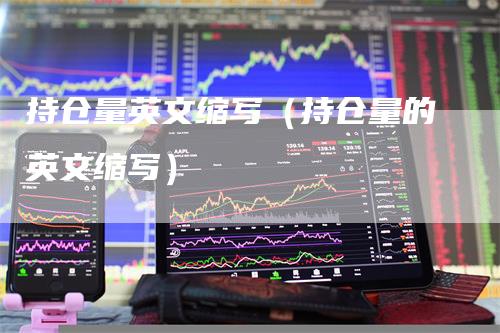
What is Position Size?
Position size refers to the number of units of a particular asset that an investor or trader holds in a portfolio. It is a crucial factor in determining the risk and potential return of a trade or investment. In the financial markets, position size is often expressed as a percentage of the total portfolio value or as a specific number of shares or contracts.
Why is Position Size Important?
Position size is important because it helps investors and traders manage their risk effectively. By determining the appropriate size of a position, individuals can limit potential losses and increase the chances of achieving their investment objectives. It also helps in diversifying the portfolio and maintaining a balanced risk-reward ratio.
What is Position Size in Trading?
In trading, position size is the number of contracts or shares a trader buys or sells in a particular trade. It is based on factors such as the trader's risk tolerance, account size, and the volatility of the asset being traded. Proper position sizing ensures that a trader is not overexposed to a single trade, mitigating the impact of potential losses.
How to Calculate Position Size?
There are several methods to calculate position size, including:
- The Percentage Risk Method: This method involves determining the percentage of the trading account that an investor is willing to risk on a trade. The position size is then calculated based on the stop loss level of the trade.
- The Fixed Fractional Method: This method involves risking a fixed percentage of the trading account on each trade. The position size is calculated based on the account's total value and the predetermined risk percentage.
- The Volatility Method: This method takes into account the volatility of the asset being traded. Position size is determined by the expected range of price movement and the trader's risk tolerance.
Is There an Ideal Position Size?
There is no one-size-fits-all answer to determining the ideal position size. It varies depending on factors such as an individual's risk appetite, account size, trading strategy, and market conditions. It is essential for each investor or trader to evaluate their risk tolerance and financial goals before determining an appropriate position size.
Can Position Size Change Over Time?
Yes, position size can change over time. Market conditions, available capital, and risk tolerance may evolve, necessitating adjustments to position sizes. As a trader's account grows or shrinks, the position size should be revised to maintain a consistent risk profile. Regular reviews and updates of position sizes are crucial for long-term success in trading or investing.
Conclusion
Position size is a critical aspect of risk management in trading and investing. It helps individuals determine the appropriate amount of exposure to various assets, ensuring a balanced risk-reward ratio. Calculating position size using suitable methods and regularly reviewing and adjusting it are essential for maintaining a successful investment strategy.